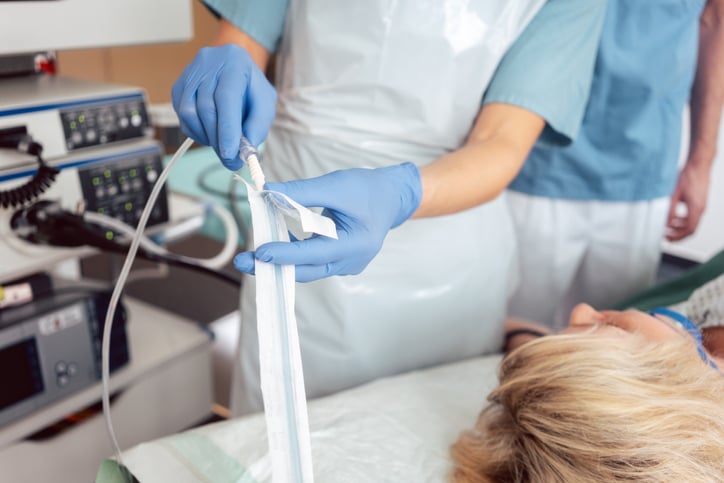
With the advent of minimally invasive in-office procedures, patients are increasingly choosing sedation instead of general anesthesia. Sedation exists on a continuum, ranging from very mild sedation to deep sedation, but it is generally safer than anesthesia and requires a shorter recovery time. Patients also may require sedation in some emergency medicine scenarios.
The increasing prevalence of conscious sedation as well as similar pain and anxiety management strategies requires that healthcare providers master the art of suctioning the airway of the sedated patient. Here’s what you need to know about the purpose of suctioning patients during sedation.
Suctioning in Dentistry
Suctioning is a key skill in dentistry, even for routine cleanings. When patients are sedated for fillings, extractions, and other procedures, suctioning is even more important. In dental practices, suctioning under sedation can:
- Remove blood following extractions and other procedures.
- Remove excess secretions when a patient is unable to clear their airway or when saliva prevents a dentist from seeing or working on the site.
- Prevent choking and aspiration when oral structures break loose or when blood or other fluids occlude the airway.
Preventing and Treating Aspiration
When a patient is sedated, their altered state of consciousness can inhibit or eliminate their ability to clear airway secretions. This increases the risk of aspiration, particularly if the patient vomits or bleeds during surgery. Suctioning any excess fluids in the mouth lowers the risk to the patient.
If a patient begins actively vomiting or bleeding, prompt suctioning can reduce the volume of contaminants the patient inhales. The volume of aspirate swallowed directly correlates to the risk of mortality following an aspiration event. This is because the more fluid a patient aspirates, the more dangerous microbes they are exposed to. In patients with compromised immune systems, the risk of death from aspiration is especially high.
Clearing Airway Secretions
The airway naturally processes secretions, even under sedation. Patients with chronic respiratory diseases or neurological conditions may have difficulty clearing their airways even when fully conscious. Under sedation, more patients struggle to clear the airway or even notice that the airway must be cleared.
Suction under sedation maintains establishing a patent airway by clearing secretions. This can also reduce the risk of coughing, which can make dental and other oral procedures more difficult.
Managing Emergencies
Suctioning can treat a wide range of emergencies during surgical procedures that require sedation. Some examples include:
- Clearing the airway when unexpected bleeding threatens aspiration
- Reducing the volume of vomit a patient aspirates when the patient suddenly begins vomiting
- Preventing choking when dental structures break loose or removing airway obstructions in a patient who is actively choking
- Clearing the airway in a patient who is experiencing anaphylaxis following an allergic reaction
Portable Suction Matters
A provider’s duty to their patient does not end with sedation. Some patients experience complications while coming out of sedation or recovering. This phenomenon demands that providers be prepared to treat airway-related emergencies wherever a patient is—not just in the surgical suite or hospital room.
Hospitals are legally required to provide emergency care to patients within 250 yards of the hospital. Other healthcare providers who are equipped to tend to patients even after they leave surgery can save lives and bolster their professional reputation.
The right portable emergency suction device allows you to rapidly tend to patients before and after surgical procedures. It also empowers emergency responders to deliver quality, consistent suction no matter where they encounter patients. For help selecting the right portable emergency suction machine for your agency, download our free guide, The Ultimate Guide to Purchasing a Portable Emergency Suction Device.
Editor's Note: This blog was originally published in May of 2022. It has been re-published with additional up to date content.















